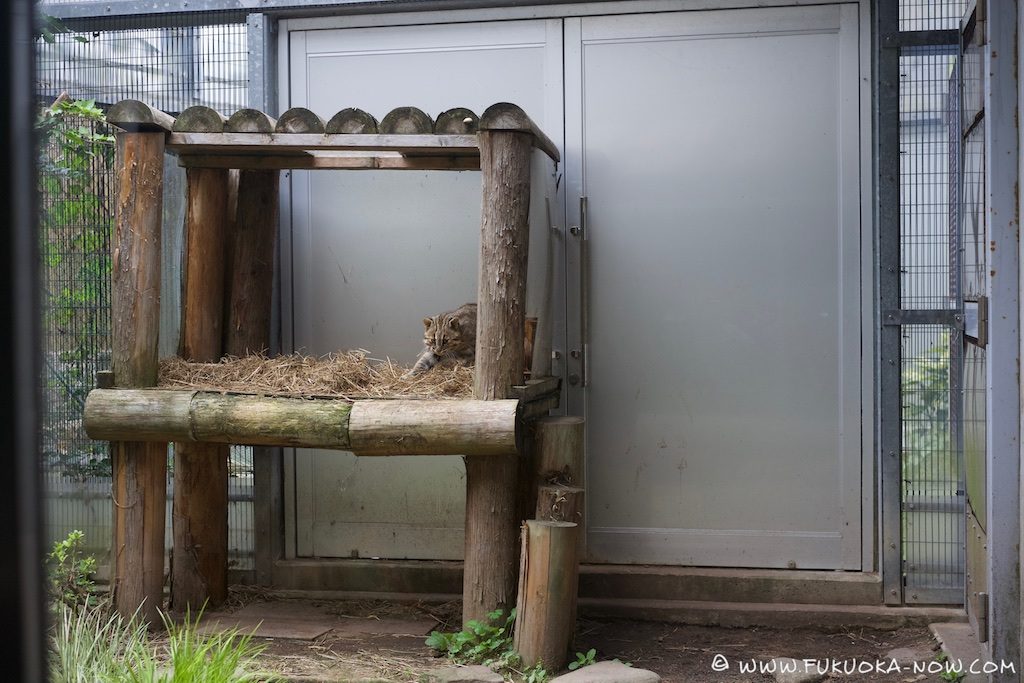Tsushima: just a hop, skip and a jump from Fukuoka

Take a plane 30 minutes northwest of Fukuoka and you’ll find yourself over Tsushima (対馬). Densely forested, and like much of Japan, extremely mountainous, the island has a total population of just 32,000. Yet Tsushima is a natural and cultural treasure trove and visitors may well find themselves lost to the island’s charms. One rainy weekend in October, Oscar Boyd from Fukuoka Now took the chance to visit Tsushima and explore the island a little further.
A little about Tsushima (対馬)
Tsushima sits between Kyushu and South Korea in the Genkai Sea. Despite its offshore location, it is officially part of Nagasaki Prefecture. Tsushima’s southern tip is 73km from Fukuoka, while from its Northern coastline you can see the city of Busan, just 49.5km away. Though it is generally referred to as Tsushima, the island is actually comprised of two main islands and 100 smaller islands. End to end, Tsushima is just over 80km in length.
Its proximity to both Japan and Korea means that the island has an extraordinarily rich history, serving as the first point of call for Korea-Japan trade and ambassadorial relations. Proximity has also made it a site of frequent wars and attempted territorial grabs. The island was considered so important to Japanese strategy that the formerly joined mainland was split into the two current islands in the 17th century by an artificial canal. A second canal was added in the early 1900s to allow for larger ships to cross quickly from the east to the west of the island. To this day, the legacy as a first-stop between Japan and Korea means that all inhabitants are taught Korean until the end of high school.
The Airport

Tsushima is currently served by Tsushima Yamaneko Airport, with daily flights to Fukuoka and Nagasaki. The airport has an hourly shuttle bus which terminates at the Information Center in Izuhara, the island’s main city. The bus takes 30 minutes and costs ¥700. Flights into and out of the airport aren’t that frequent so the bus schedule is well timed with arrivals and departures. The airport also has a taxi rank from which you can take a 20-minute taxi to the city for around ¥3,000.
• Tsushima Yamaneko Airport: 400, Kechi, Mitsushimacho, Tsushima, Nagasaki
Getting Around
If you’re planning on exploring further afield than Izuhara and its surroundings, we recommend you hire a car from one of the car-hire providers at the airport. Yoshinaga, Toyota, Budget and Orix all have rent-a-car services located in the (tiny) arrivals lounge of the airport. Renting a car requires you to have an appropriate driver’s license or international driver’s license and may require some basic Japanese language ability. Car rental starts at around ¥5,000/day.
If you want to stick to buses you can buy a one-day bus pass that allows unlimited travel for ¥1,000/adult or ¥500/child.
Izuhara
Assuming you’ve made it out of the airport, one of the first ports of call should be Izuhara, Tsushima’s largest town. It has plenty to see and some great hotels and restaurants:
1. Information Center

Assuming you’ve taken the bus, it’ll end up terminating outside the Izuhara Information Centre, a.k.a Fureai Dokoro. Here you can find brochures and maps of the island, see any upcoming events and, if you speak Japanese, book a variety of tours around the island. The information center has plenty of information in English, as well as a large room detailing the history and nature of the island. Though the center doesn’t currently have fluent English-speaking staff, it is likely that that will change in the near future as the island tries to attract more English-speaking tourists.
• Information Centre: 672-1 Imayashiki, Izuharamachi, Tsushima
2. Kaneishi Castle Grounds

A 3-minute walk from the Information Center is the entrance to Kaneishi Castle, built to house the Soh Clan, Tsushima’s feudal lords. The main castle building has since been destroyed, but the entrance gate is beautiful, framed by the mountains behind it. Walk through the gate and head up the path to find the Kaneishi Castle Gardens (built in the 1690s) and the Soh Clan Cemetery.
• Kaneishi Castle: 670-2, Imayashiki, Izuharamachi, Tsushima; Free entry
3. The Soh Clan Cemetery & Ban-Sho-In

A magnificent set of stairs ascends into the forest above
The Soh Clan started their rule over Tsushima in the 16th century and, when the first feudal lord, Soh Yoshitoshi, died in 1615, the Soh cemetery was established in his honor. The cemetery is nestled in the hills behind Izuhara, and to get to the cemetery you must ascend a stair between giant cedar trees. The graveyard is extraordinarily atmospheric, the graves telling the story of the island’s rulers and prosperity, with each generation’s grave built to be larger than their predecessors. Many of the graves are crumbling at the edges, but the stone has survived the last 400 years remarkably well.
The graveyard also contains Ban-Sho-In, one of Tsushima’s finest temples. Ban-sho-in is contains the death tablets of the Tokugawa clan as well as a variety of gifts from Korea that have been collected over the centuries.
• The Soh Clan Cemetery & Ban-Sho-In: 192 Izuharamachi Nishizato, Tsushima; ¥300
4. Hachimangu Jinja Shrine

In the middle of the town is Hachimangu Shrine, easily spotted by its massive tori gate. Konishi Maria, wife of Soh Yoshitoshi, the first lord of the Tsushima, is enshrined here.
• Hachimangu Jinja Shrine: 645 Izuharamachi Nakamura, Tsushima; Free entry
5. Museum of Folklore and History
If you would like to see some of the island’s most treasured artifacts, head to the Folklore museum. It contains maps, ancient scroll paintings and a collection of treasures from the island’s many prominent visitors and dignitaries. Descriptions are only in Japanese and photography is prohibited.
• Museum of Folklore and History: 668-1 Imayashiki, Izuharamachi, Tsushima; Free entry
6. Avenue of Samurai Houses
A short walk from the information center in Izuhara is the so-called Avenue of Samurais. Along this narrow road is a collection of old houses which hark back to Japan’s warriors of old. One of the houses doubles as a community centre and contains a museum to Nakarai Tousui, who appears on the Japanese ¥5,000 bill. Born in Tsushima, Tosui became the first foreign correspondent for the Osaka Asahi Shinbun newspaper. He later wrote a variety of novels which turned him into a Japanese national treasure. The museum is only small, but has a cafe and a side exhibition dedicated to the champion Tsushima sumo wrestler, Tushima Nada.
• Nakarai Tousui Museum & Community Center: 584 Izuharamachi Nakamura, Tsushima; Free entry
7. Food

The Tsushima Burger in all its glory
While in Tsushima, you’ve got to try two things: the Tsushima Burger and tonchan. The Tsushima Burger is beef-based, but the patty also contains hijiki (a Japanese sea vegetable) and squid. It is covered in a sweet mayonnaise dressing and is delicious. Tonchan is similarly delicious, a pork-based dish that speaks to Korea’s influence on the island. Kiyo is a great place to try the burger, and Senryo is a charming izakaya with where you can sample the tonchan and a load of other local specialties.
• Kiyo: 1052 Izuharamachi Ōtebashi, Tsushima
• Senryo: 1079 Izuharamachi Ōtebashi, Tsushima
8. Hotels
There are plenty of hotels in Izuhara to cater to every need. Of particular note is Tsushima Seizanji, which is based in an active temple. The breakfast (Japanese) is great and the bedrooms comfortable. No onsen, but the sento (communal bath) is decent.

• Tsushima Seizanji: 1453 Izuharamachi Kokubu, Tsushima; From ¥5,000/night incl. breakfast
The Great Outdoors
Tsushima has bountiful natural resources that make it an outdoor lover’s paradise. From hiking and sea kayaking to scuba diving and snorkeling, Tsushima has it all. Add to that an impressive variety of wildlife and you could spend a lifetime discovering Tsushima’s great outdoors.
Hiking

Tsushima has a bunch of incredible hikes dotted around the island. The highest mountain on the island is Mount Yatate, which rises 649m above Tsushima. Here are three recommended hikes; be sure to visit an information center to pick up the Tsushima Trekking Guide Book (対馬トレッキングガイドブック).
1. Shiratake (白嶽)
Shiratake has been regarded as a holy mountain on Tsushima for over a millennia, and has been selected as one of Kyushu’s 100 best mountains. The top is fairly steep and becomes more of a scramble than a hike. However, the views from the top are fantastic. The distinct twin peaks of Shiratake are visible from across the island and will be one of the first things you see once you step off the plane. The mountain is located in a wildlife protection area, and the seasonal flowers are gorgeous.
• Height: 519m; Distance: 2.2km; Time: 75 min. to top excl. rest time.
• Shiratake (白嶽): Mitsushimacho Sumo, Tsushima
2. Joyama (城山)

Reality vs expectations: on a clear day you can see Korea from here
More of a leisurely stroll through a beautiful forest than a full-on hike, this route is laced with history, tracing the ancient path up to the ruins of Kaneda Castle (金田城跡). The castle was originally built in the year 667 as a strategic lookout towards Korea, and was retrofitted over 1,000 years later during the Russo-Japanese War (1904-1905) with concrete fixtures and modern artillery. On sunny days, there are great views towards South Korea! Along the route you can see some rare plants including the uncaria hook plant (vine that hooks to other trees to grow) and endemic orchid species.
• Height: 272.8m; Distance: 2.6km; Time: 50 min. to top excl. rest time.
• Joyama (城山): Mitsushimacho Kurose, Tsushima
3. Mitake (御岳)
Alongside Shiratake, Mitake is considered one of the island’s holy mountains. The main attraction of Mitake is its unique collection of wildlife. Until the 1920s, it was home to Japan’s largest species of woodpecker, the kitataki, and other rare birds still call the area home including white-tailed eagles. It is also notable as the home to a collection of yamaneko, the wildcat species endemic to the island. They’re tiny, so there’s no danger of being attacked by one! A wonderful hike through a primeval forest with great scenery.
• Height: 479 m; Distance 1.5km; Time: 90 min. to top excl. rest time.
• Mitake (御岳): Kamiagatacho Seta, Tsushima
Sea Kayaking

Sea kayaking with Tsushima Eco Tours
Sea Kayaking around Aso Bay is one of the best ways you can explore Tsushima, with its network of inlets and uninhabited islands dotted all over the place. The bay is sheltered meaning waters are calm and beginner friendly. Two companies can be found in Aso Bay:
1. Tsushima Eco Tours

Tsushima Eco Tours mainly offers beginners tours in Japanese (they’re very good at miming to English speakers and are exceptionally friendly). They offer a range of guided tours from half-day sea kayaking tours (3hrs, ¥6,500) to two-day diving and sea kayaking tours (¥20,000). They offer tours no matter the season, but reservations are required!
Tsushima Eco Tours
• 29 Mikata, Mitsushima-machi, Tsushima
• 0920-54-3595
• http://seakayak.kacchell-tsushima.net
2. Tsushima Kayaks

Just next door to Tsushima Eco Tours, Tsushima Kayaks offers a similar selection of kayaking options as well as tours for more experienced kayakers. One-day (6hrs) tours start at ¥10,000 and include lunch.
Tsushima Kayaks
• 29 Mikata, Mitsushima-machi, Tsushima
• 090-4891-5064
• http://www.sea.tcctv.ne.jp/fun-boo/tours.html
Scuba Diving & Snorkeling
In 2012, coral was discovered in Tsushima, the most northern coral in the world, beating the previous record holder, Iki Island. There are a couple of diving shops on the island where you can rent gear and explore the island’s seas. Check out the kayaking shops too, which offer combined kayak/diving packages. If you don’t fancy scuba, then make sure you bring along a mask and snorkel to fully enjoy the island’s waters.
1. Jou Jou (スキューバダイビング屋上々)
• Beach dives ¥4,000~; Boat dives ¥7,000~; Overnight packages available.
• 737-3 Kuta, Izuhara-machi, Tsushima
• 08:45~17:30
• 0920-52-5011
• http://www.scubadiving-joujou.jp
2. Abyss Diving (アビスダイビング対馬)
• Beach dives: ¥6,000~; Boat dives (x2) ¥22,000; Scuba Qualifications: ¥65,000~
• 301-17 Higashizato, Izuhara-machi, Tsushima
• 10:00~20:00
• 080-3900-0677
• http://abyss8.com/
Horse Riding

Tsushima has its own breed of horses known as Tai-shu-ba, similar in stature to Shetland ponies, but more closely related to wild Mongolian horses. There used to be 4,000 horses on the island, used mainly in agriculture, but now only 39 remain. Head to Mehoro Dam Baji Kouen to go horse riding: you can go for full or half-day treks (¥30,000/¥15,000) or try a 30-min. river trek (¥2,000~¥4,000). Due to the size of the horses, the treks are only available to those who weigh below 70kg. Five-minute rides are available to those who weigh below 80kg. Reservations required!

“I’ve never ridden a horse before”
Mehoro Dam Baji Koen (horse park)
• Park: 09:30~17:00, Horse riding: 10:00~16:00
• Closed: Mon., Thu. and in heavy rain.
• Seta, Kamiagata-cho, Tsushima
• 0920-85-1113
• http://www.sea.tcctv.ne.jp/fun-boo/TsushimaNativeHorse.html
Beaches & Coastline

Tsushima has plenty of white-sand beaches, where you can relax and swim. In the north of the island, Miuda Beach (三宇田浜) has been selected as one of the top 100 beaches in Japan and is a must visit. It can get pretty crowded during the summer season, but is almost empty off-peak (September onwards). Camping is possible at the beach’s camp site. Mogi Beach (茂木浜) is located about 45 minutes drive south of Miuda and is similarly sandy. If you are on the south island, you can head to Oura Beach (尾浦海水). Though it’s pretty rocky, it has camping and barbecue facilities and barbecue pits. More beaches can be found on the Tsushima government website here.
Watazumi Shrine
If you are driving around the coastline then you’ve got to make a stop at Watazumi Shrine. One of the most iconic spots on Tsushima, Watazumi Shrine’s has a set of five tori gates that lead into the sea.

The shrine has an aura of exceptional serenity, but is a popular stopping point for groups of tourists on their way around the island. Head to the shrine early in the morning to see it at its best.
• Watazumi Shrine: 55 Toyotamacho Nii, Tsushima
Wildlife

Because of its low population and high forest cover, Tsushima’s wildlife has remained well intact. It is the only place in the world that you can find the Tsushima Leopard Cat (tsushima yamaneko) which is related to the similarly endangered Iriomote yamaneko. The cat is roughly similar in size to a housecat, but has the patterning of a leopard. You’ll be lucky to spot one in the wild, there’s only about 100 on the island, but if you’re determined to see one, head to the Tsushima Wildlife Conservation Center. The center has a (mostly) Japanese exhibition on Tsushima’s biodiversity, and a real life yamaneko. The center is about 90 minutes from the airport.

Tsushima Wildlife Conservation Center
• 10:00~16:30 (L.I.: 16:00)
• Closed: Mon. (Tue. if Mon. is Hol.)
• Free
• Saozaki Park, Kamiagata-cho, Tsushima
• 0920-84-5577
• http://kyushu.env.go.jp/twcc/multilang/english/profile.htm
The Island is also notable for its seasonal flowers, with many endemic species. One of the most spectacular events of the year is the flowering of the Hitotsu-Batago tree in May every year. Found only in the north of Tsushima, this white flower gives the appearance of snow cover, and transforms the northern coast of Tsushima.
Keep your eyes turned to the skies for Tsushima’s impressive collection of cranes, eagles and wood pidgeons. Several species are both endemic and endangered.
Viewpoints

The Kankoku Lookout
On clear days, Korea can be seen from most north-facing viewpoints. One of the best viewpoints on the south island is from the ruins of Kaneda Castle at the top of Joyama (see hiking section). Meanwhile, at the northwest tip of the island is Tsushima’s main viewpoint towards Korea: the Kankoku (Korea) Lookout. You can also see Korea from the top of Saozaki Park. The park contains the remains of several gun batteries and the Tsushima Wildlife Conservation Center.
Kankoku Lookout
• 09:00~18:00
• Closed: Never
• Free (Telescope: ¥100)
• Waniura, Kamitsushima-machi, Tsushima
• 0920-86-4839
Local Produce
Like any small island, Tsushima has its fair share of local produce. Apart from fantastically fresh fish, keep an eye out for following the local produce:
Soba

Make your own soba
According to legend, Tsushima is the land in which Japanese soba (buckwheat noodles) was invented, made from buckwheat flour imported from China. Tsushima’s soba is called ‘Tai-shu maboroshi soba’ and has a uniquely intense buckwheat flavor. At Soba Dojo you can learn to make your own soba and eat them afterwards (¥4,000, up to four people). Reservations required at least three days in advance.
Soba Dojo, Agata no Sato
• Gift shop: 09:00~16:00, Lessons; 10:30~11.30 Restaurant: 11:00~14:00
• Closed: 12/29 ~ 1/4
• 565-2 Sasuna-ko, Kamiagata-cho, Tsushima
• 0920-84-2340
• http://sakusyoku.com/agata/
Taiyaki

If you’ve spent time in Japan before, you may have tried taiyaki, custard or red-bean filled, fish-shaped pastries. The sweet is fundamentally the same on Tsushima, but is unique for its shape, a circular design with the fish curled up on itself.
Nagatome Kashiten
• 09:00~17:00
• Closed: Mon., Fri. and summer
• 588 Saka, Mine-cho, Tsushima
• 0920-82-0814
Honey
When travelling around the island you may notice the odd, out-of-place wooden stump at the side of the road. These are used as beehives to create the famous and delicious Tsushima honey. Honey can be bought at the Izuhara Information Center’s gift store.
Map
Written by Oscar Boyd for Fukuoka Now
Copyright Fukuoka Now – including all text, photos and illustrations. Permission required to re-use in any form. Meanwhile, feel free to link to to this page.
NOTE: The information presented here was gathered and summarized by the Fukuoka Now staff. While we have done our best to check for accuracy, there might be errors and details may have changed. If you notice any errors or changes, please contact us. This report was originally written in Oct. 2016.









